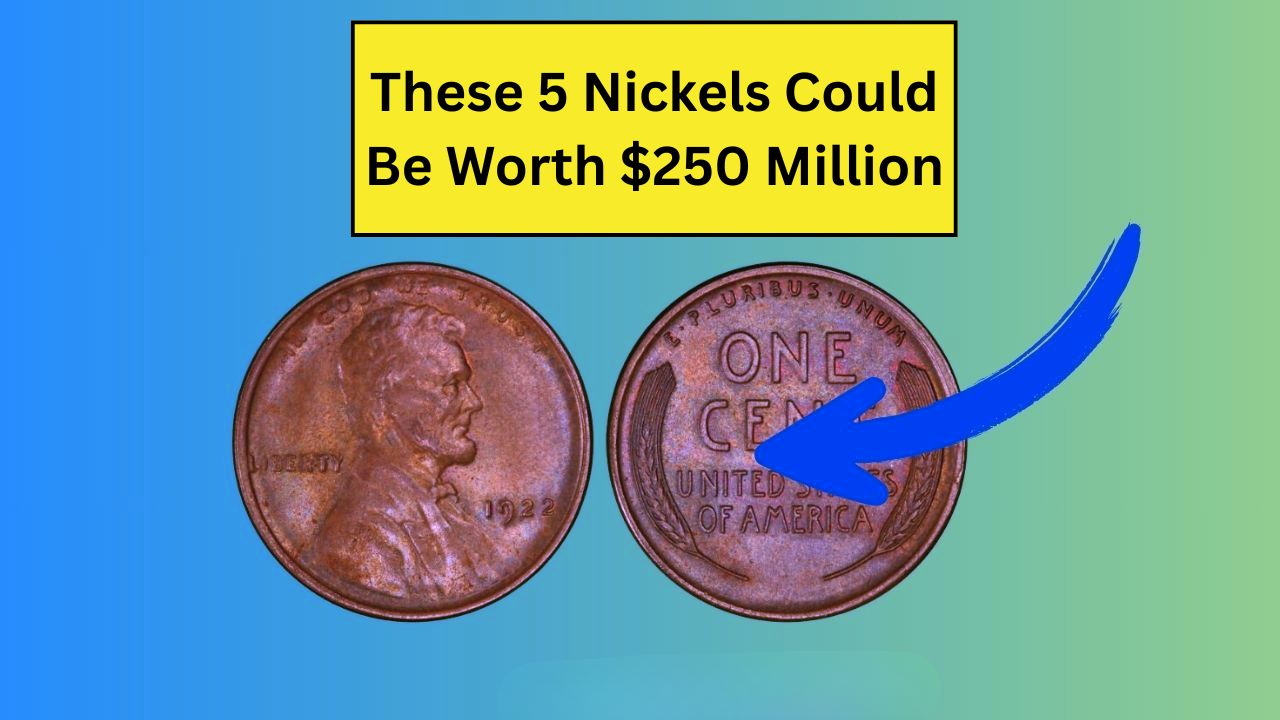Nickels might seem like small change, but some are worth millions to collectors. A few rare U.S. nickels, due to minting errors or tiny production runs, have become treasures that together could be valued at a staggering $250 million. From secret strikes to wartime mistakes, these coins tell fascinating stories of American history. Could one be hiding in your coin jar? Here’s a look at the top five most valuable nickels and what makes them so special.
The Legendary 1913 Liberty Head Nickel
The 1913 Liberty Head Nickel is the king of rare coins. Only five were ever made, and they weren’t supposed to exist. The Liberty Head design was replaced by the Buffalo Nickel in 1913, but a Mint worker, possibly Samuel Brown, secretly struck these five coins. Valued at up to $6.25 million each, one sold for $4.56 million in 2018. With just three in private hands and two in museums, their scarcity and mystery make them a collector’s dream.
1918/7-D Buffalo Nickel: A Wartime Error
The 1918/7-D Buffalo Nickel is a rare gem born from a minting mistake. During World War I, a 1917 die was reused in 1918 at the Denver Mint, with the “8” stamped over the “7.” This overdate error, visible under a magnifying glass, is super rare—fewer than 100 exist. A high-grade example sold for $350,750 in 2006, but today it could fetch over $500,000. Its bold history and scarcity keep collectors hunting for it.
1926-S Buffalo Nickel: A Low-Mintage Prize
The 1926-S Buffalo Nickel stands out for its tiny production run. Only 970,000 were minted in San Francisco, compared to millions from other mints. Poor striking quality makes high-grade examples even rarer. One sold for $322,000 in 2008, and top specimens could now reach $400,000 or more. Its combination of low mintage and historical charm makes it a favorite among Buffalo Nickel fans.
Key Valuable Nickels
Here’s a quick look at these and other top nickels to watch for:
| Coin & Year | Key Feature | Estimated Value |
|---|---|---|
| 1913 Liberty Head | Only 5 exist, secret strike | Up to $6.25M |
| 1918/7-D Buffalo | Overdate error, Denver Mint | Up to $500K |
| 1926-S Buffalo | Low mintage, San Francisco | Up to $400K |
| 1937-D 3-Legged | Buffalo missing leg, error | Up to $150K |
| 1969-S Doubled Die | Doubled text, Jefferson Nickel | Up to $35K |
The 1937-D 3-Legged Buffalo Nickel, with a missing leg due to die over-polishing, and the 1969-S Doubled Die Jefferson Nickel, with blurry text, round out the list.
Why These Nickels Are Still Out There
Billions of nickels have been minted, and some rare ones are still in circulation. Errors like overdates or doubled dies often went unnoticed, slipping into pocket change. Stories of finds, like a 1937-D 3-Legged Nickel discovered in change, keep collectors hopeful. With millions of coins still in use, checking old collections or coin rolls from banks could uncover a hidden fortune.
How to Spot a Valuable Nickel
To find a rare nickel, check the date and mint mark—a small letter near the date (D for Denver, S for San Francisco, or none for Philadelphia). Use a magnifying glass to look for errors like overdates, missing legs, or doubled text. For example, the 1918/7-D shows a “7” under the “8.” If you find something unusual, get it appraised by a professional coin grader like PCGS. Next time you grab a nickel, give it a quick look—you might just hold a piece of history worth millions.




